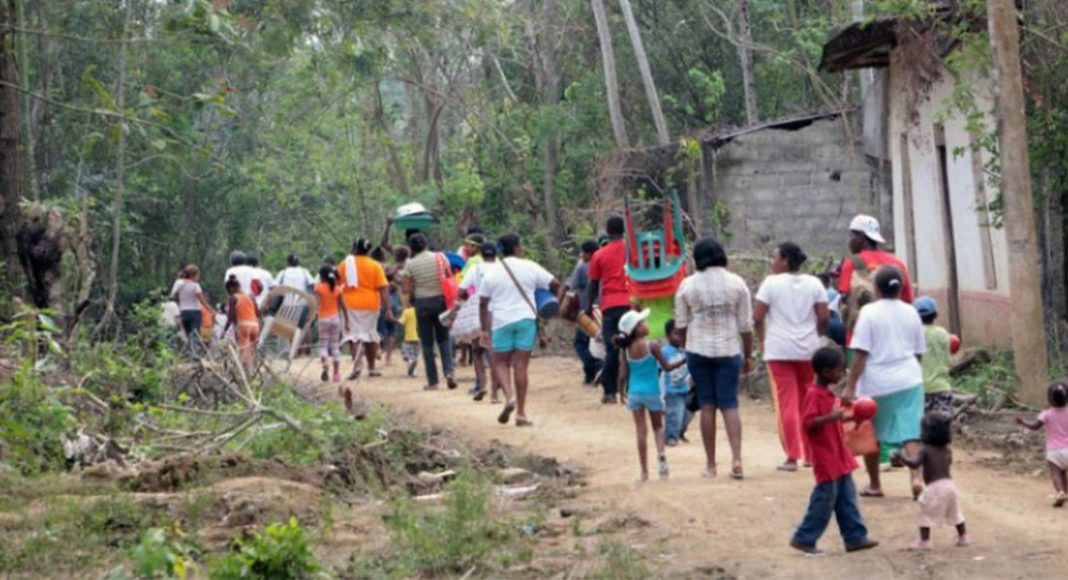On October 29, 2019, the indigenous governor of the Tacueyó Reserve, Cristina Bautista, was attacked and killed in the Cauca region of Colombia by members of the Estructura Dagoberto Ramos, a dissident FARC group which wished to extend its control over the communities that she led. She died, along with four members of an indigenous guard group protecting the reserve from drug traffickers. Despite the signing of the 2016 Havana Peace Agreement between FARC and the Colombian government, many of Colombia’s rural communities still face violence and displacement on a massive scale. At the end of 2019, 5.8 million people were still displaced – making it the country with the second largest internally displaced population in the world. This poses a direct threat to the stability of the peace and falls disproportionately on indigenous and Afro-Colombian communities.
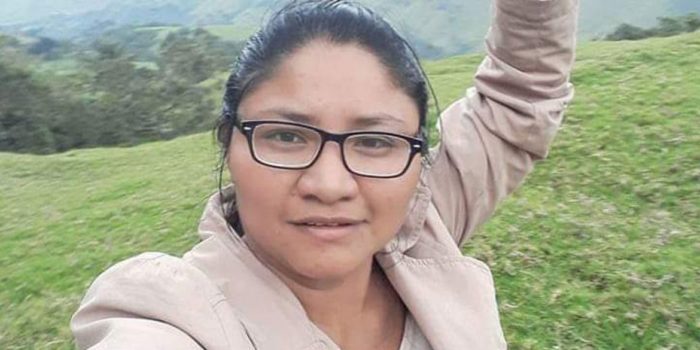
A Deadly Picture
Lina Caro is one of the millions of Colombians displaced in the six decade civil war. She was forced from her hometown of Marialabaja in 2008 with only the clothes she was wearing and a small suitcase. The local cell of paramilitary group the AUC marked her for death after they heard rumours that she had filed complaints against a former employer with strong ties to these armed groups. Lena was only able to flee her hometown because she was warned by a member of the paramilitary group. ‘It was Peyito Vasquez who warned me. It is thanks to him that I am still alive because I ran away before they killed me.’ Peyito himself was later assassinated by the same paramilitaries who threatened Lina’s life.
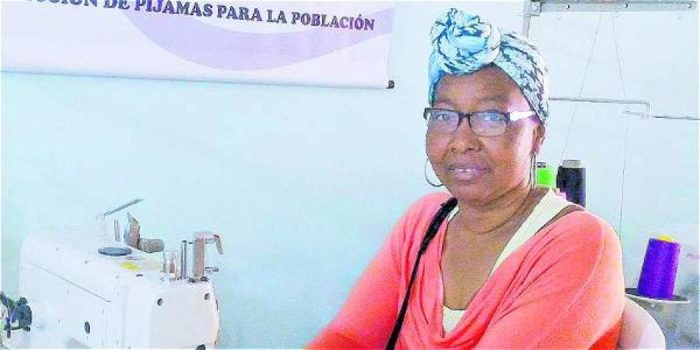
Like many displaced by Colombia’s conflict, she moved from the rural areas of the country to a major city, Bogota. Displaced persons live on the margins in Colombia’s cities, treated with suspicion by locals. In her words, ‘As a displaced person, you are faced with going from one place to another and finally becoming one of the anonymous people who have arrived in the cities, and are seen by others as a danger’.
The signing of the 2016 Peace Agreement was supposed to end the tragedy of displacement. Yet two years later, the number of Colombians displaced each year by violence had increased to 145,000. Colombians living in remote areas still face extraordinary levels of violence from the many armed groups that have expanded to control FARC’s territory. According to Wilfredo Cañizares, Director of the Progress Foundation, ‘this war has been made invisible by the National Government…. the fear of stumbling into minefields and becoming victims of kidnapping or extortion also forces people to leave their homes behind and start a new life in urban areas, where there is relative security’.
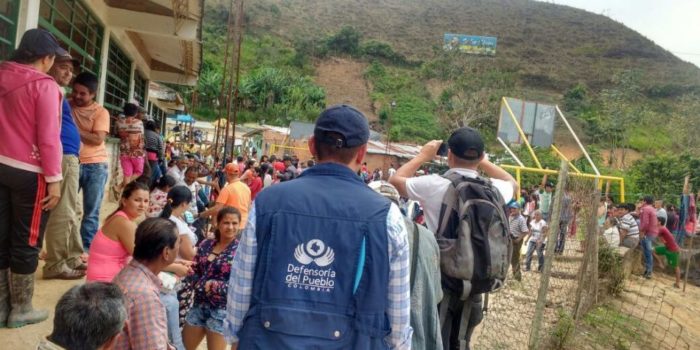
In Norte de Santander, a region near Colombia’s Venezuelan border, 30,000 people were recorded as displaced in 2018 alone. Displacement in this region is driven by a dangerous combination of violence between two guerilla groups, the EPL and ELN, and a surge of refugees from Venezuela. Juan Pablo Bacca, Secretary of Government in Ocaña, explains that ‘the situation is worrisome because that volume of floating people has increased, ending up swelling the ranks of unemployment and informality in this town’. This pattern is repeated across Colombia’s border regions, which have the misfortune of being located along critical drug trafficking routes and far from the control of the Colombian state.
The state remains absent
Prime among the causes of internal displacement and the reemergence of armed groups is the failure of the Peace Agreement to establish a strong state presence in areas where it had been largely absent for over half a century. The agreement included promises to extend state services to rural areas that had been under FARC control, including drinking water, schools, electricity, and road infrastructure. However, in many communities, even basic services like clean drinking water are still lacking.
According to Human Rights Watch researchers in the Pacific region of Catatumbo, ‘We interviewed a woman whose husband had been killed at 10 am, a few blocks from the police station, allegedly by members of armed groups. There were several people at the scene when this happened, but the assassins fled without problems.’ The likely perpetrator was either the National Liberation Army (ELN) or the Popular Liberation Army (EPL), both of which are fighting for territory in Catatumbo. According to Adam Isacson of the Washington Office on Latin America, ‘the government had a window of opportunity to establish the state in lands the rebels gave up, but it didn’t take that chance – now there are many groups fighting for the same territory.’
Coca is back
The Peace Agreement also failed to halt the production and distribution of coca that both funds and motivates violence. Despite the FARC’s demobilization, coca production in Catatumbo increased by nearly 145 percent between 2015 and 2017. Surging coca yields across Colombia since the peace agreement have motivated FARC dissidents, paramilitary groups, and criminal cartels to compete for control over the lucrative crops.
The Peace Agreement included a detailed plan for comprehensive rural reforms designed to end coca production. Coca farmers were to be given cash payments if they replaced their coca fields with legal crops. The New York Times spoke to coca farmers who said that these cash payments halted for several months after President Duque came into power and, even after they restarted, the officials who were supposed to implement the planting of legal crops never arrived.
Even if crop substitution programs had continued as planned, poor farmers would likely have continued to produce coca. Nano is a coca farmer in southern Colombia who is able to provide his family a better quality of life because of the additional revenue from farming coca crops. ‘The cultivation of legal crops like cocoa doesn’t bring any income and I have a family and need to provide for them. Coca makes it possible for me to send my children to school,’ he says.
Indigenous and Afro-Colombian Communities in the crossfire
‘We want them to help us, to send special security for us’. In a rare recording released by the Federation of Associations of Indigenous Councils of Chocó (Fedeorewa), members of the Embera people ask for protection while caught in the crossfire between gangs. Ten terrified children hide with their parents from bullets, with the smallest children on their mother’s backs. The Embera people have been used as a human shield by both the guerrilla National Liberation Army (ELN) and the paramilitary Gaitanista Self-Defense Forces of Colombia, in clear violation of humanitarian standards. This scene was repeated throughout most of April for the indigenous people of the Nueva Jerusalem Community, with clashes ‘causing the explosion of 10 fragmentation grenades’.
In an open letter Fedeorewa states ‘Many families continue there within the crossfire that occurs in the community, only 37 families managed to flee to the community of Peñita, where they arrived to protect their lives’. The crossfire also affects more than 928 people living beyond Nueva Jerusalén in nearby towns. Armed groups have immobilised the community’s boats to prevent them from leaving, and the constant violence has trapped them in their homes.
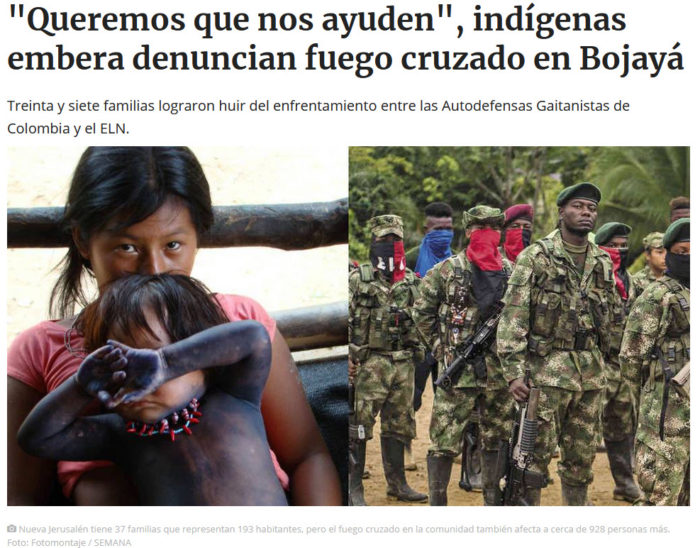
Colombia’s indigenous groups are the victims of what many indigenous groups call an ‘ethnocide’, and both indigenous and Afro-Colombian people are over-represented in the country’s displaced population. These communities live on land that is valuable for armed groups involved in illegal mining or narco-trafficking. Indigenous groups are being targeted specifically by criminal groups because of their cooperation with the crop substitution policies outlined in the Peace Deal. They have also formed self-defense groups and destroyed coca and marijuana produced by the dissident groups, which has further escalated violence against them.
Displacement perpetuates violence
Violence in Colombia continues, and, with it, a tide of displacement. This is the same violence that killed Cristina Bautista and threatens Colombia’s most vulnerable populations. However, displacement is more than just a symptom of structural conflict; it is also a meaningful force for perpetuating violence. If farmers and indigenous leaders are killed and forced from their land for supporting the peace process, then the measures designed to transform Colombia’s rural areas will die with them. Protecting rural communities is a human rights issue, but it is also a key step in building peace.
Main Image: Displaced people on the move. Photo: Colombia Reports

